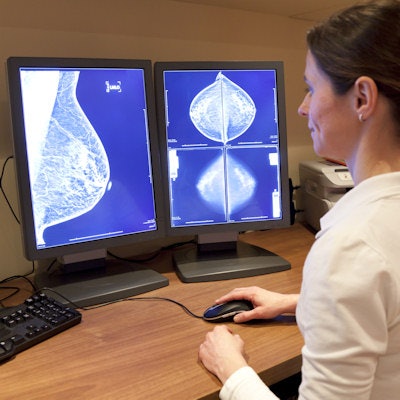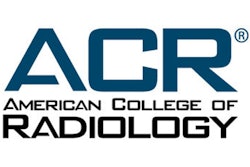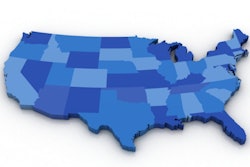
Factors associated with radiologists -- such as their annual reading volume and experience -- can affect breast cancer screening recall rates just as much as patient characteristics such as age or breast tissue density, according to a study published online July 20 in the Journal of the American College of Radiology.
The findings suggest that particular interventions that target radiologists -- such as boosting annual reading volume requirements or performing second reviews of potential recalls -- could help reduce unwanted variation in recall rates, wrote a team led by Dr. Catherine Giess of Harvard Medical School and Brigham and Women's Hospital in Boston.
"More recently trained radiologists have higher recall rates, but association of annual reading volumes with recall rate varies," the group wrote. "Our study's primary objective was to evaluate patient, radiologist, and examination characteristics affecting individual screening mammography recall rates in a large academic breast imaging practice."
In the U.S., recall screening mammography rates range from 3.4% to 30.7%, Giess and colleagues wrote. Possible reasons for this may include low annual minimum reading volumes and higher U.S. recall rate benchmarks (compared with Europe), or a lack of double reading and a high malpractice threat.
To assess the effects of these factors, the researchers studied 61,198 screening mammography exams acquired between October 2012 and May 2015 and interpreted by 13 breast imaging specialists at an academic center and two outpatient centers. They tracked patient demographics, breast density, BI-RADS categories, and prior screening exam findings, and calculated each radiologist's annual screening volume, clinical experience, and concentration in breast imaging. They also surveyed the radiologists for their level of risk aversion, stress from uncertainty about a diagnosis, and malpractice concerns.
Of the total number of exams, 9.3% (5,678) were recalled. Radiologist and patient characteristics associated with higher odds of recall included the following (all were statistically significant):
- Radiologist annual reading volume of fewer than 1,250 exams
- Radiologist experience of fewer than 10 years
- Patient age younger than 50 years
- Prior mammographic findings
- Higher breast tissue density category
- Patient undergoing first screening exam
Radiologists who read between 1,250 and 1,900 exams per year were 23% less likely to recall screening exams, and those who read more than 1,900 per year were 8% less likely to recall, the team found. Radiologists with 10 to 20 years of experience were 32% less likely to recall exams, and those with more than 20 years of experience were 57% less likely to recall.
Giess and colleagues did note that radiologists' risk aversion, stress from uncertainty about a diagnosis, and malpractice concerns were not associated with higher recall rates.
Targeting radiologist factors that contribute to higher recall rates could help reduce these rates, according to the researchers. Interventions could include boosting annual reading volumes (perhaps by centralizing screening interpretation among fewer radiologists within a practice) and performing second reviews of potential recalls from less-experienced radiologists.
"If effective, such initiatives could improve patients' experience of care," the group concluded.




















